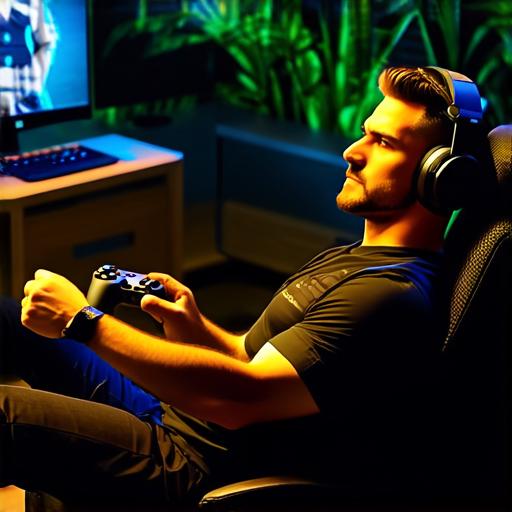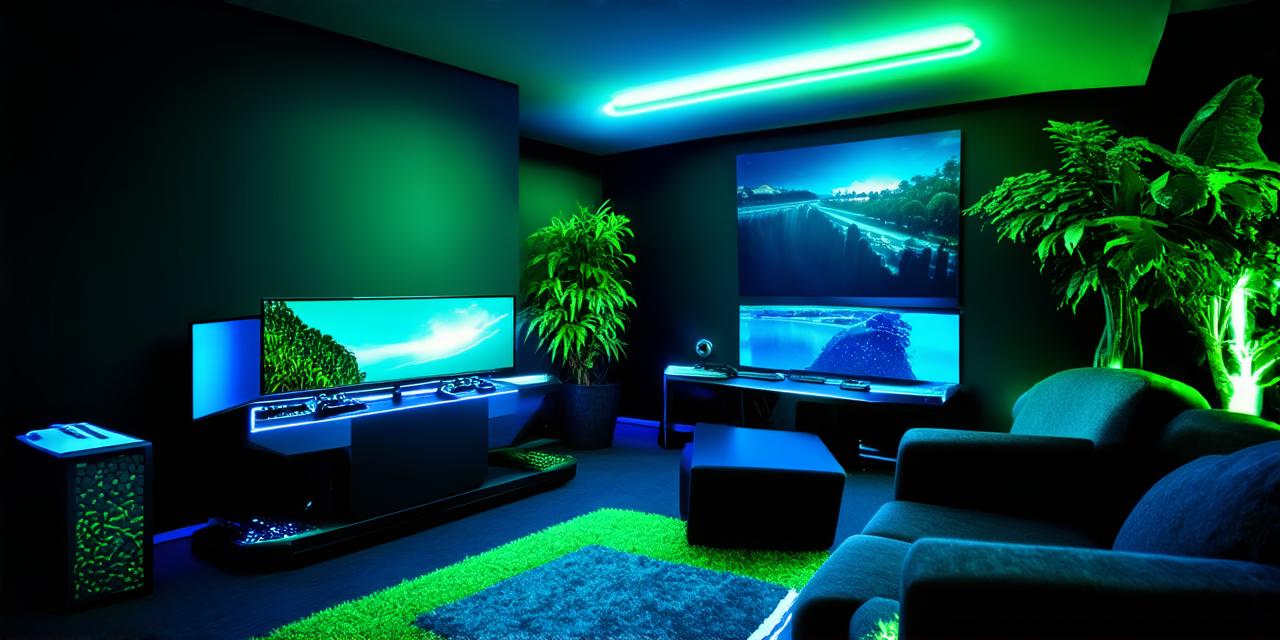
Let’s get started!
Identify Your Needs and Goals
Before diving into the design process, take some time to identify what you need and want from your gaming room. This will help you create a space that suits your needs and preferences.
- What types of games do you play? (e.g., FPS, RPG, strategy)
- What is your preferred gaming style (e.g., solo or multiplayer)?
- Do you require a specific type of setup, such as a VR headset or a projection system?
- How much space do you have available for the room?
- Do you plan on hosting gaming events or inviting friends to play?
Choose the Right Space
The location of your video game room is crucial to its success. When selecting a space for your gaming setup, consider the following factors:
- Lighting: Make sure the space has enough natural light or that you can add artificial lighting to create an inviting and comfortable atmosphere.
- Noise level: Look for a quiet space where you won’t be disturbed by outside noise or disturbing others with your gaming.
- Comfort: Choose a space that is comfortable and easy to move around in, with enough room for all of your equipment and furniture.
Furnish Your Game Room with Comfort and Functionality in Mind
When furnishing your game room, consider investing in comfortable chairs or bean bags that support your back and neck. You may also want to add a desk or table for snacks and drinks, as well as storage shelves for games and accessories.
Select the Right Equipment for Your Game Room
When selecting equipment for your game room, consider what type of gaming you’ll be doing and what features are most important to you.
- Choose a high-quality monitor: If you’re into FPS games, you may want a high-resolution monitor with fast refresh rates. On the other hand, if you prefer RPGs or strategy games, a larger screen with good color depth might be more suitable.
- Select the right gaming chair: Investing in a comfortable gaming chair can make all the difference in your overall gaming experience. Look for chairs that support your back and neck and have adjustable armrests and lumbar support.
- Consider adding accessories: Depending on your needs, you may want to add accessories such as headphones, controllers, and other peripherals to enhance your gaming experience.
Create a Personalized Gaming Atmosphere
Creating a personalized gaming atmosphere can help you get into the right mindset for gaming. Here are some tips:
- Use ambient lighting: Ambient lighting can be used to create a cozy and inviting atmosphere in your game room. You can also use different light modes to suit different game moods, such as using bright lighting for action-packed games and dim lighting for more relaxing games like RPGs or strategy games.
- Add music: Gaming music can help set the tone for your gaming session. Consider using playlists that match the genre of your favorite games or creating your own custom soundtracks to enhance your experience.
- Decorate with gaming elements: Adding decor elements such as posters, figurines, and other memorabilia can add personality to your game room and make it feel like a true haven for gaming enthusiasts.
Stay Organized and Productive in Your Game Room
It’s essential to stay organized and productive in your game room. Here are some tips:
- Stick to a schedule: Set aside specific times for gaming, snacking, and relaxing. This can help you maintain a healthy work-life balance.
- Prioritize tasks: Determine which tasks need to be completed first and focus on those before moving onto other activities. For example, if you have homework or other schoolwork that needs to be completed, try to get that done before starting your gaming session.
- Take breaks: Taking regular breaks can help prevent burnout and improve your productivity. Use this time to stretch, hydrate, or engage in non-gaming activities.
- Stay connected with friends: If you plan on hosting gaming events or inviting friends to play, make sure to stay connected with them through social media or messaging apps. This can help build a sense of community and foster new friendships.
FAQs
1. How much space do I need for my video game room?
The amount of space you need depends on your preferences and the types of games you play. A good rule of thumb is to have at least enough space to comfortably move around in, with enough room for all of your equipment and furniture.
2. What kind of lighting is best for a gaming setup?
Bright lighting is generally best for action-packed games, while dim lighting can be used for more relaxing games like RPGs or strategy games. You may also want to use different light modes to suit different moods or activities.
3. Is it important to invest in ergonomic equipment when setting up a gaming setup?
Yes, investing in ergonomic equipment such as keyboards with adjustable wrist rests and mice with programmable buttons can help reduce the risk of injury and improve your overall gaming experience.
4. How can I create a personalized gaming atmosphere in my game room?
You can create a personalized gaming atmosphere by adding decor elements that reflect your style, using ambient lighting to set the mood, and playing music that matches the genre of your favorite games.
5. Should I set a schedule for my gaming activities?
Yes, setting a schedule for your gaming activities can help you maintain a healthy work-life balance and ensure that you’re not spending too much time in front of the screen.
